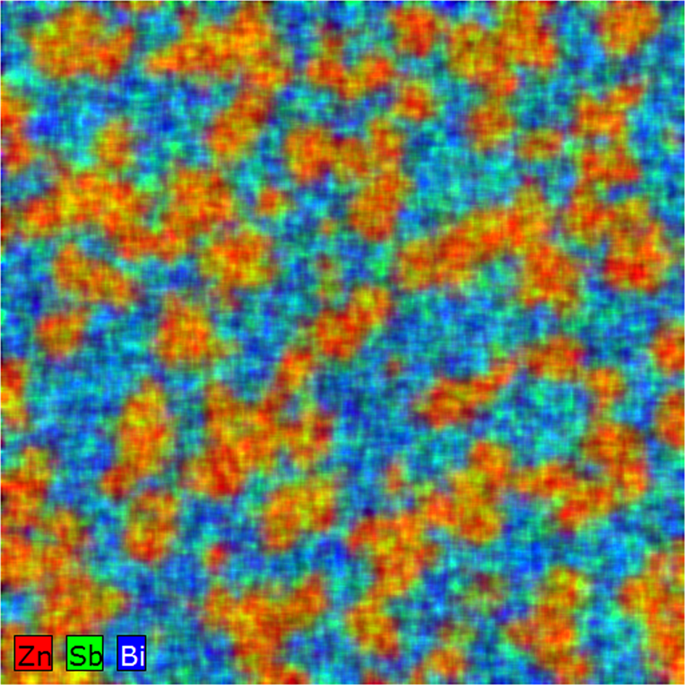NPG Asia Materials ( IF 8.6 ) Pub Date : 2020-02-14 , DOI: 10.1038/s41427-020-0197-8 Guoxiang Wang , Haizhou Shi , Andriy Lotnyk , Daotian Shi , Rongping Wang

|
Phase-change films with multiple resistance levels are promising for increasing the storage density in phase-change memory technology. Diffusion-dominated Zn2Sb3 films undergo transitions across three states, from high through intermediate to low resistance, upon annealing. The properties of the Zn2Sb3 material can be further optimized by doping with Bi. Based on scanning transmission electron microscopy combined with electrical transport measurements, at a particular Bi concentration, the conduction of Zn-Sb-Bi compounds changes from p- to n-type, originating from spinodal decomposition. Simultaneously, the change in the temperature coefficient of resistivity shows a metal-to-insulator transition. Further analysis of microstructure characteristics reveals that the distribution of the Bi-Sb phase may be the origin of the driving force for the p–n conduction and metal-to-insulator transitions and therefore may provide us with another way to improve multilevel data storage. Moreover, the Bi doping promotes the thermoelectric properties of the studied alloys, leading to higher values of the power factor compared to known reported structures. The present study sheds valuable light on the spinodal decomposition process caused by Bi doping, which can also occur in a wide variety of chalcogenide-based phase-change materials. In addition, the study provides a new strategy for realizing novel p–n heterostructures for multilevel data storage and thermoelectric applications.
中文翻译:

Zn-Sb-Bi相变合金中旋节线分解的p–n传导类型的转换
具有多种电阻水平的相变膜有望增加相变存储技术中的存储密度。扩散控制的Zn 2 Sb 3薄膜在退火后经历了从高电阻到中电阻到低电阻三种状态的转变。Zn 2 Sb 3的性质通过掺杂Bi可以进一步优化材料。基于扫描透射电子显微镜结合电迁移测量,在特定的Bi浓度下,Zn-Sb-Bi化合物的传导从p型变为n型,源自旋节线分解。同时,电阻率温度系数的变化显示出金属到绝缘体的转变。对微观结构特征的进一步分析表明,Bi-Sb相的分布可能是p–n传导和金属至绝缘体转变的驱动力的起源,因此可能为我们提供另一种改善多层数据存储的方式。此外,Bi掺杂促进了研究合金的热电性能,与已知的报道结构相比,导致功率因数更高。本研究为Bi掺杂引起的旋节线分解过程提供了宝贵的启示,Bi掺杂也可以在多种基于硫族化物的相变材料中发生。此外,该研究为实现用于多层数据存储和热电应用的新型p–n异质结构提供了新的策略。









































 京公网安备 11010802027423号
京公网安备 11010802027423号